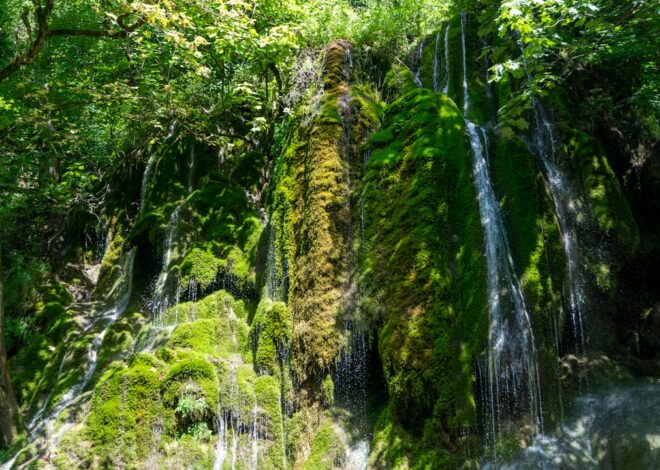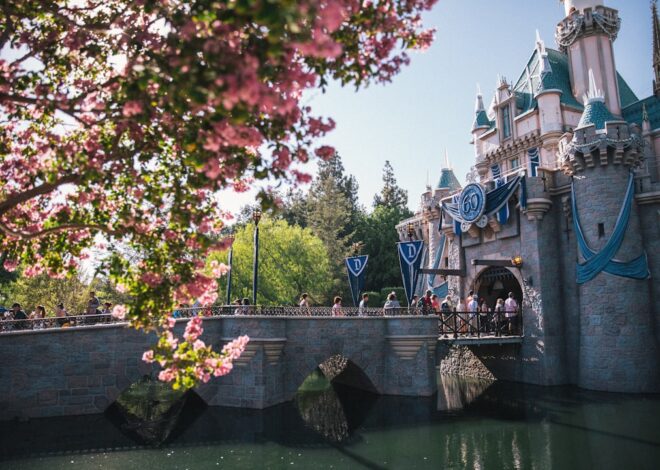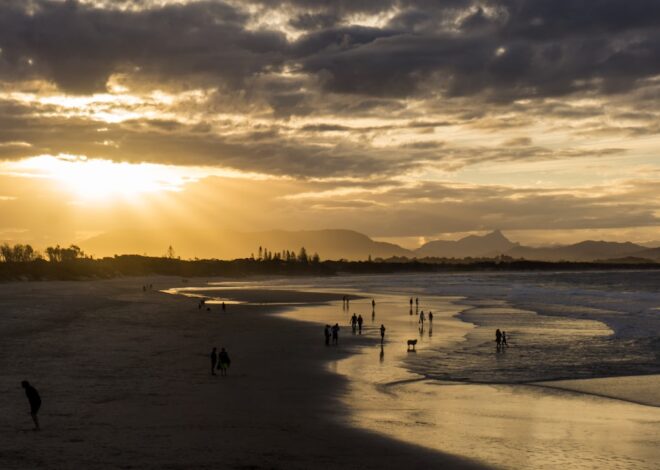
Adventure in the Arctic: Glamping Under the Aurora
The Arctic is a realm of breathtaking beauty and stark contrasts, where the landscape is shaped by the relentless forces of nature. Vast expanses of ice and snow stretch as far as the eye can see, punctuated by rugged mountains and shimmering glaciers. The air is crisp and invigorating, filled with the scent of pine and the promise of adventure.
This remote region, often perceived as inhospitable, is a treasure trove of natural wonders that captivates the imagination. The interplay of light and shadow creates a mesmerizing spectacle, particularly during the long summer days when the sun barely dips below the horizon, casting a golden glow over the icy terrain. In winter, the Arctic transforms into a magical wonderland, cloaked in a blanket of snow that sparkles under the ethereal glow of the moon.
The silence is profound, broken only by the soft crunch of snow underfoot or the distant call of wildlife. This pristine environment is not just a feast for the eyes; it also offers a unique opportunity for introspection and connection with nature. The Arctic’s stark beauty invites visitors to slow down, breathe deeply, and immerse themselves in an experience that feels both otherworldly and profoundly grounding.
It is a place where time seems to stand still, allowing for moments of reflection and appreciation for the planet’s raw, unfiltered beauty.
Key Takeaways
- The Arctic offers a magical and unique experience for glamping enthusiasts, with its stunning landscapes and natural wonders.
- Glamping, short for glamorous camping, combines the comforts of luxury accommodation with the beauty of the great outdoors.
- When choosing an Arctic glamping experience, consider factors such as location, amenities, and the opportunity for wildlife encounters.
- The Northern Lights, also known as Aurora Borealis, are a breathtaking natural phenomenon best viewed in the Arctic region.
- The Arctic is home to a diverse range of wildlife, including polar bears, reindeer, and various bird species, providing unforgettable encounters for glampers.
What is Glamping?
Glamping, a portmanteau of “glamorous” and “camping,” has emerged as a popular trend in outdoor recreation, combining the thrill of camping with the comforts of luxury accommodations. Unlike traditional camping, which often involves pitching a tent and roughing it in nature, glamping offers a more refined experience. Guests can enjoy amenities such as plush bedding, gourmet meals, and private bathrooms while still being immersed in the great outdoors.
This fusion of comfort and adventure appeals to a wide range of travelers, from families seeking a unique getaway to couples looking for a romantic escape. The concept of glamping has evolved significantly over the years, with various styles and accommodations available to suit different tastes and preferences. From luxurious yurts and safari tents to treehouses and eco-friendly cabins, glamping sites are designed to provide an unforgettable experience without sacrificing comfort.
Many glamping locations also emphasize sustainability, incorporating eco-friendly practices into their operations to minimize their impact on the environment. This approach not only enhances the experience for guests but also fosters a deeper connection to nature, encouraging visitors to appreciate and protect the stunning landscapes they inhabit.
Choosing the Right Arctic Glamping Experience

Selecting the perfect Arctic glamping experience requires careful consideration of several factors, including location, amenities, and activities available. The Arctic is vast, encompassing diverse regions such as Greenland, Norway, Canada, and Alaska, each offering unique landscapes and cultural experiences. For instance, glamping in Norway’s Svalbard archipelago provides an opportunity to witness polar bears in their natural habitat while enjoying stunning views of towering glaciers.
In contrast, glamping in Greenland allows visitors to immerse themselves in Inuit culture while exploring breathtaking fjords. When choosing an Arctic glamping site, it is essential to evaluate the amenities offered. Some glamping accommodations feature luxurious touches like heated floors, private hot tubs, and gourmet dining options, while others may focus on providing a more rustic experience with communal dining and shared facilities.
Additionally, consider the types of activities available at each location. Whether it’s dog sledding across frozen tundras or kayaking among icebergs, the range of experiences can greatly enhance your Arctic adventure. Researching these aspects will help ensure that your glamping experience aligns with your interests and expectations.
The Northern Lights: A Natural Wonder
| Location | Frequency | Best Time to See |
|---|---|---|
| Arctic Circle | 200 nights per year | September to March |
| Scandinavia | 100 nights per year | September to March |
| Canada | 40 nights per year | September to March |
One of the most captivating phenomena in the Arctic is the Northern Lights, or Aurora Borealis. This natural light display occurs when charged particles from the sun collide with atoms in Earth’s atmosphere, creating vibrant waves of color that dance across the night sky. The result is a breathtaking spectacle that can range from soft greens to brilliant purples and reds.
Witnessing this celestial display is often at the top of many travelers’ bucket lists, making it a significant draw for those venturing into Arctic regions. The best time to view the Northern Lights typically spans from late September to early April when nights are longest and skies are darkest. However, conditions must be just right for optimal viewing; clear skies away from artificial light pollution are essential.
Many glamping sites in the Arctic offer guided tours or dedicated viewing areas to enhance the experience. Some even provide cozy outdoor lounges with fire pits where guests can relax while waiting for the lights to appear. The anticipation builds as night falls, and when the first streaks of color illuminate the sky, it becomes an unforgettable moment that etches itself into memory.
Arctic Wildlife Encounters
The Arctic is home to an array of unique wildlife adapted to thrive in its harsh conditions. From majestic polar bears roaming across sea ice to playful seals basking on ice floes, encounters with these incredible creatures are a highlight for many visitors. Birdwatchers will also find delight in spotting migratory species such as puffins and arctic terns during their summer nesting season.
Each encounter offers a glimpse into the delicate balance of life in this extreme environment and underscores the importance of conservation efforts. Responsible wildlife viewing is crucial in preserving these species and their habitats. Many glamping operators prioritize ethical practices by ensuring that their tours adhere to guidelines that minimize disturbance to wildlife.
This might include maintaining safe distances from animals or employing knowledgeable guides who understand animal behavior and habitat needs. Engaging with wildlife in a respectful manner not only enhances the experience but also fosters a deeper appreciation for these remarkable creatures and their role in the Arctic ecosystem.
Arctic Activities: From Dog Sledding to Ice Fishing

The Arctic offers an abundance of activities that cater to adventure seekers and nature lovers alike. One of the most iconic experiences is dog sledding, where teams of eager huskies pull sleds across pristine snow-covered landscapes. This exhilarating mode of transportation has deep cultural roots among Indigenous peoples and provides an authentic way to explore the Arctic wilderness.
Many glamping sites offer guided dog sledding tours led by experienced mushers who share their knowledge about this traditional practice while ensuring safety and enjoyment. In addition to dog sledding, visitors can partake in ice fishing—a unique experience that combines patience with excitement. Anglers drill holes into frozen lakes or rivers and drop lines in hopes of catching fish such as trout or arctic char.
This activity not only connects participants with local fishing traditions but also allows them to appreciate the serene beauty of frozen landscapes. Other popular activities include snowshoeing through snow-laden forests, cross-country skiing along scenic trails, or even taking guided snowmobile tours for those seeking a faster-paced adventure.
The Importance of Sustainable Tourism in the Arctic
As interest in Arctic tourism grows, so does the need for sustainable practices that protect this fragile environment. The region faces numerous challenges due to climate change, including melting ice caps and shifting ecosystems that threaten both wildlife and Indigenous communities. Sustainable tourism aims to minimize negative impacts while promoting conservation efforts and supporting local economies.
By choosing eco-friendly glamping options that prioritize sustainability, travelers can contribute positively to this delicate balance. Many glamping operators are committed to sustainable practices by utilizing renewable energy sources, reducing waste through recycling programs, and sourcing food locally whenever possible. Additionally, educational initiatives often accompany these experiences, informing guests about environmental issues facing the Arctic and encouraging responsible behavior during their stay.
By fostering awareness and appreciation for this unique ecosystem, sustainable tourism not only enhances visitors’ experiences but also plays a vital role in preserving the Arctic for future generations.
Tips for a Safe and Enjoyable Arctic Glamping Experience
Preparing for an Arctic glamping adventure requires careful planning to ensure safety and enjoyment throughout your stay. First and foremost, dressing appropriately for extreme weather conditions is crucial; layering clothing made from moisture-wicking materials will help regulate body temperature while keeping you dry. Insulated outerwear, waterproof boots, gloves, hats, and thermal socks are essential items that will keep you comfortable during outdoor activities.
Additionally, staying informed about local conditions is vital for safety; checking weather forecasts and understanding potential hazards such as icy terrain or wildlife encounters can help mitigate risks. Engaging with knowledgeable guides who are familiar with the area can enhance your experience while ensuring safety protocols are followed during activities like dog sledding or hiking. Lastly, embracing flexibility in your itinerary allows for spontaneous adventures—whether it’s chasing after unexpected wildlife sightings or adjusting plans based on weather changes—ensuring that your Arctic glamping experience is both memorable and enriching.
FAQs
What is glamping?
Glamping is a portmanteau of “glamorous” and “camping,” and refers to a style of camping that combines luxurious accommodations and amenities with the experience of being in nature.
What are the Northern Lights?
The Northern Lights, also known as the Aurora Borealis, are a natural light display in the Earth’s sky, predominantly seen in high-latitude regions around the Arctic and Antarctic.
What is glamping under the Aurora?
Glamping under the Aurora refers to the experience of luxury camping in the Arctic region, with the added opportunity to witness the Northern Lights from the comfort of a well-appointed accommodation.
What are some common amenities offered in Arctic glamping sites?
Arctic glamping sites often offer amenities such as heated accommodations, comfortable bedding, hot showers, gourmet meals, and guided excursions to view the Northern Lights.
What are some popular destinations for glamping under the Aurora?
Popular destinations for glamping under the Aurora include Norway, Finland, Sweden, and Iceland, where the Northern Lights are frequently visible during the winter months.
What should I pack for a glamping trip in the Arctic?
When preparing for a glamping trip in the Arctic, it’s important to pack warm clothing, including thermal layers, insulated outerwear, waterproof boots, and accessories such as gloves, hats, and scarves. Additionally, it’s advisable to bring a camera with a tripod to capture the stunning Northern Lights.


